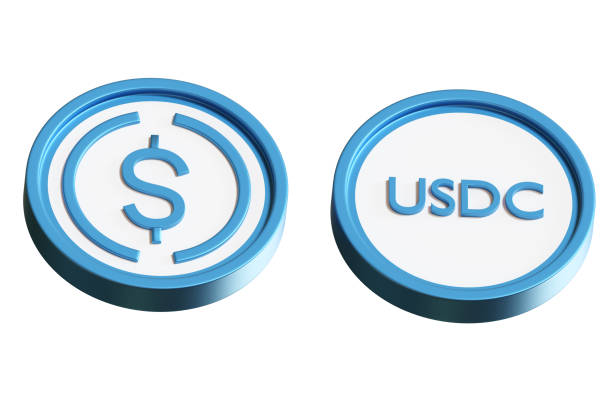How HashKey’s $500M Digital Asset Treasury Fund Signals Hong Kong’s Institutional Crypto Maturation

Introduction
When HashKey Group announced a $500 million Digital Asset Treasury (DAT) fund in September 2025, it did more than launch a product: it broadcast a strategic thesis. HashKey is betting that institutional appetite for on-chain liquidity and regulated settlement rails has matured enough in Hong Kong to support a perpetual, enterprise-grade treasury vehicle built around high-liquidity tokens such as Bitcoin and Ethereum. By situating the fund in Hong Kong and aligning it with newly-implemented stablecoin rules, HashKey is attempting to knit together custody, audited reserves and licensed stablecoin rails into a single product that can be used by treasuries, payment processors and fintech firms — not just by speculators.
That alignment matters because Hong Kong’s regulatory scaffolding for fiat-referenced stablecoins — set out in the Stablecoins Ordinance and accompanying HKMA guidance — went live in 2025 and establishes explicit reserve, audit and redemption expectations for licensed issuers. A DAT that can reliably convert on-chain assets into licensed s
tablecoins and into regulated fiat corridors under clearly defined rules is materially different from offshore products that have historically forced counterparties to rely on ad-hoc OTC markets and opaque custody arrangements.
Why a Hong Kong DAT matters now
The timing of HashKey’s fund is no accident. Over the last 18 months Hong Kong has moved from exploratory pilots to a standing regulatory framework for stablecoins and digital-asset supervision. That regime — now in force and accompanied by HKMA supervisory guidance — offers two concrete advantages for institutional actors: first, a pathway to licensed stablecoin rails that can be relied on for settlement and, second, a set of auditable rules and disclosure expectations that bank
s, auditors and compliance teams can build around. For enterprises seeking to use crypto as an operational tool (settlement, payouts, liquidity buffering), those two items are prerequisites.

At the same time, incumbent financial players are moving. Banks and Telcos are participating in sandbox programmes and forming joint ventures with Web3 firms to pursue licensed stablecoins — a clear signal that the market is aligning TradFi distribution and crypto rails inside Hong Kong. That creates potential on-ramps for DATs that need fiat corridors and institutional counterparties. The combined message is: Hong Kong is creating a regulated environment where a large, local, institutional DAT can plug into both bank rails and licensed stablecoins.
What a Digital Asset Treasury (DAT) actually is — and why it’s different
A DAT is not a VC fund, nor is it a liquidity pool for retail. Conceptually a DAT behaves like a corporate treasury: persistent, cash-management oriented, and designed to be an operational reserve rather than a short-duration trading vehicle. Its prime responsibilities are to hold liquid, market-grade tokens; to make on-chain liquidity available for settlement or hedging; and to present custodial and audit assurances that institutional counterparties require.
Practically, that means three core design elements: a conservative asset selection (large-cap, highly liquid tokens), robust custody and auditability (segregation, PoR and independent attestations), and liquidity engineering (on-chain stablecoin buffers and bank fiat lines). HashKey’s announced DAT — structured as a perpetual vehicle with Bitcoin and Ethereum anchors and selective allocations to “top-tier” ecosystem projects — neatly follows this blueprint. But the real test will be whether it delivers predictable, contractually enforceable convertibility from token holdings to licensed stablecoins and to fiat corridors.
HashKey’s DAT: strategy, scope and public signals
HashKey has framed the fund as a large, multi-currency vehicle that will emphasize cornerstone assets (BTC + ETH) while selectively allocating to infrastructure projects. Public reporting and the firm’s materials indicate the fund will be open-ended — designed to accept subscriptions and service redemptions — which differentiates it operationally from closed-end venture strategies and aligns it with corporate treasury use cases. That suggests HashKey intends the DAT to act as a provider of on-chain liquidity and as a reserve for enterprise users who want institutional-grade exposure without running their own markets or custody stack.
The strategic choice of Hong Kong domicile is notable: it is a jurisdiction that now offers a licensing path for fiat-referenced stablecoins and that is courting bank participation. For a fund that promises to convert on-chain assets into regulated settlement rails, proximity to licensed stablecoin issuers and local banks shortens operational touchpoints — at least in theory. Whether the HKMA’s early licensing cadence will limit immediate throughput is a practical question for users evaluating the DAT today.
Portfolio construction and liquidity engineering
Institutional treasuries do not treat crypto allocations like speculative bets; they design them as cash-management instruments that must perform predictably under both normal and stressed conditions. Practically, a pragmatic Digital Asset Treasury (DAT) organises assets into interlocking layers that together balance liquidity, return and operational risk. At the centre sits a core reserve of spot Bitcoin and Ethereum — chosen because Bitcoin supplies deep, high-quality liquidity and a relatively simple risk profile, while Ethereum provides participation in programmable-finance and staking opportunities that can generate incremental yield. Anchoring a treasury to these high-market-cap assets gives a DAT the depth it needs to absorb routine flows and to serve as a credible counterparty for payment and settlement use cases.
Surrounding that core reserve is the liquidity ladder: short-dated, highly liquid holdings denominated in licensed stablecoins and small on-chain buffers across the chains the DAT will service. This ladder is the fund’s working capital — the pool used for merchant payouts, client redemptions and fast settlement — and it must be sized and distributed across chains and custodians to avoid single-point failures. In jurisdictions like Hong Kong, where licensed fiat-referenced stablecoins are becoming regulated rails, the liquidity ladder will increasingly prioritise locally licenced stablecoins to shorten conversion paths to HKD or USD. Importantly, liquidity is not just a static number: institutional counterparties demand empirical waterfall reports that show how the fund would convert a specified share of NAV into licensed stablecoins or fiat within defined time windows under stressed market conditions, and how slippage materially changes at scale. Those waterfall scenarios, and the pre-arranged OTC or market-making lines that support them, are what separate a production-grade DAT from a theoretical allocation.
A third sleeve — the yield-seeking layer — allows modest, regulated harvesting of carry through mechanisms that are explicit, auditable and contractually constrained. For Ethereum, that commonly means staking through vetted providers or liquid staking derivatives, with careful modeling of unbonding periods, slashing risk and counterparty countermeasures. Staking yields have compressed in recent years and today typically sit in the low single digits on net depending on operator fees and mechanism, but they remain a material source of carry if lock-up and protocol risks are properly priced into the treasury’s liquidity model. Treasuries must therefore model not only expected yield but the liquidity cost of converting staked positions back to spot in stressed markets — a conversion that can take days or weeks and expose the treasury to both price and execution risk.
What makes portfolio construction at scale difficult — and what treasury teams must prioritise — is the interaction between market depth, protocol mechanics and operational rails. Large offloads into thin order books create outsized slippage; staking and other lock-up mechanics create temporal gaps between economic exposure and liquidity; and custody design (in-house MPC versus regulated third-party custodians) changes the speed and legal certainty of conversions to fiat. For that reason, serious buyers insist on measures akin to a “crypto liquidity coverage ratio” — a forward-looking metric that reconciles projected outflows, available on-chain stablecoin and fiat buffers, pre-committed OTC capacity, and a conservative estimate of slippage over 24–72 hours. Historical episodes — from March 2020’s flash crashes to exchange insolvencies in 2022 — reinforce why treasury playbooks must prioritise realized convertibility under stress, not just theoretical NAV.
Finally, liquidity engineering is operational as much as it is quantitative. It requires pre-negotiated counterparty lines, explicit settlement pathways into licenced stablecoins and fiat, and automated reconciliation systems that reduce operational friction when markets move. Contract terms should embed measurable performance metrics — e.g., maximum acceptable slippage bands, conversion time SLAs, and remediation steps if waterfall scenarios fail — and auditors should be allowed to verify both reserve holdings and the stress tests that undergird them. In short: build the treasury like a bank’s liquidity desk, not like a trading desk; design for worst-case liquidity, and then optimise for carry within those constraints.
Custody, proof-of-reserves and audit: the backbone of institutional trust
For institutional adoption, custody and transparency are non-negotiable. The modern institutional stack typically layers regulated third-party custodians (or bank custodians) with hardened key-management (MPC or HSM), regular proof-of-reserves (PoR) attestations, and independent third-party audits. Industry leaders publish PoR reports and contractually bind reserve practices to auditor scopes and cadence; Kraken, for example, has published structured PoR audits as part of restoring market trust. Custody choices present a trade: an in-house custody solution can align quicker with on-chain operations but may be perceived as higher counterparty risk, while established custodians (Coinbase Custody, BitGo, Fidelity, BNY Mellon and others) lower counterparty risk but can introduce latency and additional cost.
From a procurement and legal perspective, enterprises should demand explicit custody and insurance disclosures, contractually specified PoR cadence (quarterly or monthly depending on exposure), auditor identity, and verifiable Merkle proofs or reconciliations that map on-chain addresses to reported assets. Those artifacts are what allow banks, compliance teams and auditors to accept a DAT as a trusted counterparty.
Regulatory and operational risks that could derail the thesis
Hong Kong’s stablecoin regime reduces ambiguity but does not eliminate risk. First, the HKMA intends a measured licensing rollout; initial licence supply may be limited and that can limit throughput for DATs that rely on licensed local stablecoins for settlement. Second, geopolitical or macroprudential policy shifts — including pressures from mainland regulators — could affect cross-border flows into Hong Kong. Third, operational risks remain: custodial compromise, custodian insolvency, or smart-contract exploits on any non-BTC allocations can produce outsized losses, as earlier industry crises have demonstrated (notably the FTX collapse in 2022 and episodic liquidity breakdowns such as March 2020). Finally, market structure risk remains systemic: large holders that must liquidate in stressed markets can cause liquidity cascades and heavy slippage.
The practical consequence for institutional buyers is straightforward: contractually insist on multi-rail redemption options (licensed HK stablecoins, bank fiat rails), periodic audited stress tests, enforceable SLAs for conversion times and fees, and clearly defined indemnities and insurance arrangements that survive custodian insolvency. These controls convert product promises into durable, legally enforceable protections.
Commercial opportunities — how payment gateways, merchants and treasuries can use a DAT
A professionally run DAT in Hong Kong can unlock several concrete products. Payment gateways can route merchant settlement into licensed stablecoins held on a DAT’s liquidity ladder, enabling near-instant settlement and reducing FX/correspondent banking costs. Marketplaces can centralise volatility risk by using the DAT as a payout buffer: payouts originate from the DAT’s stablecoin pool and get converted to fiat according to SLA schedules. Corporate treasuries can treat DAT exposure as a diversification tool with tactical staking for carry, provided lock-up and slashing risks are fully disclosed and insured.
These commercial outcomes are not theoretical. Infrastructure firms such as Circle and Fireblocks have already built enterprise products that enable stablecoin settlement and bank-grade compliance layers; their activity demonstrates the practical plumbing available to connect DATs to enterprise payment flows. The differentiator for dat-backed services will be the legal guarantees, audit transparency and the depth of on-ramps/off-ramps the DAT offers.
Practical due diligence — what enterprises must demand
When evaluating a DAT offering, treasuries and payment teams should collect and embed a specific set of deliverables into binding agreements. Ask the manager to provide liquidity waterfall and stress-test reports that show how the fund handles 20–50% drawdowns and specify conversion timelines into HKD and licensed stablecoins. Require a custody whitepaper that names third-party custodians (or describes in-house MPC/HSM architecture), insurance coverage limits and key-management policies. Insist on audited PoR reports (with auditor identity and scope) that reconcile on-chain addresses to fund liabilities at a cadence that matches your exposure and risk appetite. Finally, demand an integration playbook that details API endpoints, reconciliation flows, fees, and precise SLAs for settlement and redemption. These documents convert product marketing into contractual rights and remediation pathways.
From a legal drafting perspective, typical clauses to include are liquidity SLAs (defined conversion windows and stress-test baselines), PoR and audit cadence (quarterly or monthly with named auditors), and custody & insurance requirements (minimum insured amounts and indemnities that survive custodian insolvency). Those clauses are the strongest protections for enterprise balance sheets.
What HashKey’s fund means for Hong Kong and the region
HashKey’s $500M target is a substantial market signal: it shows a local, regulated exchange believes institutional treasury demand is real and that a Hong Kong-based product can attract both corporate and fintech users. If the fund successfully deploys capital and operationalises reliable conversion pathways into licensed stablecoins and bank rails, it could accelerate APAC adoption by offering an onshore liquidity layer that treasuries and payment platforms can rely on. Conversely, if licensing constraints, weak custody practices, or poor stress-testing create failures of confidence, capital will flow to alternative hubs. Either way, HashKey’s move formalises a regional test: does a regulated Hong Kong stack (licensed stablecoins + regulated custodians + bank corridors) materially reduce the operational friction that has historically held back institutional crypto adoption? The outcome will shape product roadmaps for enterprises across APAC.
Actionable next steps for product, treasury and compliance teams
If you’re a payments operator, a fintech product owner, or a corporate treasury lead, here’s a compact roadmap to move from analysis to a pilot integration. First, request the DAT manager’s liquidity waterfall and stress-test reports and review them with your trading desk to simulate slippage scenarios. Second, demand custody and audit documentation, including PoR cadence and auditor independence. Third, run a limited-volume pilot that routes settlement into licensed stablecoins held by the DAT and measures conversion time, reconciliation friction and fees. Fourth, align compliance and tax teams early to map KYC/KYB and AML/CFT obligations before scaling. These steps will reveal whether the DAT’s operational promises hold up in production.
Conclusion — how to read HashKey’s move
HashKey’s $500M DAT launch is a milestone in the institutionalisation of crypto in Hong Kong: a concrete product built on the premise that licensed stablecoins, regulated custody and bank willingness to participate can together create an operationally useful on-chain liquidity layer. The fund’s success depends less on marketing and more on execution — custody robustness, audit transparency, multi-rail settlement capability, and rigorous stress-testing. For enterprises, the opportunity is real but conditional: you can access on-chain liquidity under a regulated roof, but only if you insist on enforceable metrics, independent attestations and exit mechanics that prevent forced sales.
Stay ahead of the trends and make informed moves in your crypto journey. Follow AURPAY for more insights and tools to navigate the evolving digital economy.



